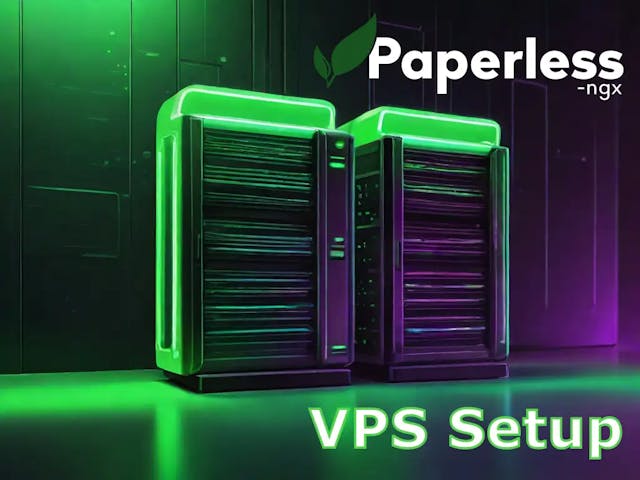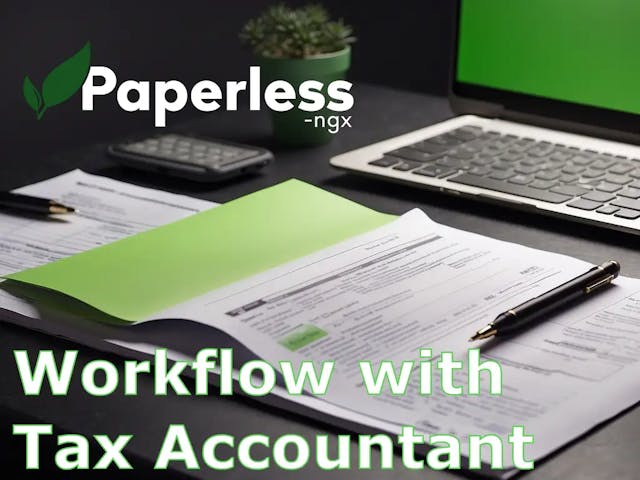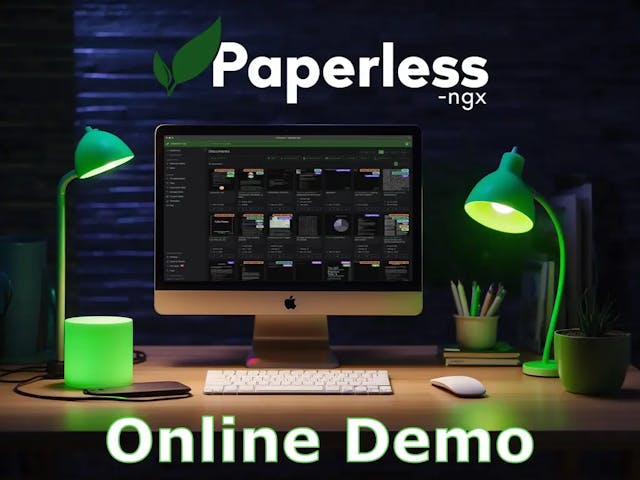Ultimate efficiency with this folder structure for companies
8 reasons why a hierarchical folder structure is inefficient for companies and self-employed individuals: alternative approaches, solutions, and best practices for document management.
Last updated: Apr 6, 2024
As the owner of a small business, you face a major challenge. Whether in property management, construction projects, project management, or another industry, you need to efficiently organize a variety of documents.
Finding the right folder structure is essential to keep track of everything and save time.
Organizing these documents is often time-consuming. You need to name the documents and place them in the appropriate folder. Most people use a hierarchical folder structure. This consists of nested folders and can be designed as desired.
Example:Documenttype/year/correspondent/date-title.pdfSuppose you receive an invoice from Home Depot on February 20, 2024. You would file it as follows:
Invoice/2024/Home-Depot/24-02-20-wardrobe.pdfThis is just one example. You probably have your system for organizing your documents so far.
An efficient file management system is essential for businesses. The deeper and more inconsistent the structure, the more time and money it costs. Finding and sorting important documents becomes more difficult. Many companies even employ full-time staff for this task.
Often, the folder structure is not fully documented, which makes it difficult for new employees to learn and increases the likelihood of errors.
Here are eight reasons why the traditional folder structure is no longer up-to-date for businesses:
1. Inflexibility
The classic folder structure is rigid. Once set up, it is a huge effort to change the folder structure. Thus, there are difficulties in adapting to changing business conditions or new requirements.
2. Difficult navigation
Often the hierarchy of folders is several levels deep. The more levels there are, the more problems there are with finding documents.
Visibility and accessibility are hampered because you only see the current level. You don't see which folders follow on the deeper levels.
3. Naming problems
Naming documents requires careful consideration and consistency. Otherwise, findability becomes difficult.
In addition, naming and structuring represent a significant amount of time.
The workflow in many companies looks like this: Each document is opened, the date, correspondent, and title are derived and written into the file name. After that, it is considered where the document should be best filed.
4. Training new employees
Your employees must familiarize themselves with the complex structure. In times of skilled labor shortages, you consume valuable time and resources of your employees for the maintenance of your folder structure.
Training new employees becomes a challenge the more complex the folder structure is.
5. Human errors
Errors are human. Where people work, errors occur. If your document management involves several manual steps, you will have to live with a certain error rate. Here it is again: The more complex, the higher the risk of errors.
6. Duplicate files
It can easily happen that you or an employee file a document multiple times in different places. It is almost impossible to know in a hierarchical folder structure whether the document already exists elsewhere.
You would have to search for the title every time and manually compare the documents.
7. Access rights
Managing access rights becomes complicated in a folder structure for businesses when different areas require different permissions.
You probably want to avoid having all employees access all company data.
Not only your employees have access, but also anyone who has access to your employees' computer.
Cybersecurity is a big issue. From this standpoint, it is not ideal.
8. Limited search functions
In most cases, you have limited options to search for your documents. Depending on how old your operating system is, you may not have OCR search available. You can only search by file name. OCR allows searching by document content. More on this in the next chapter.
We explore some technologies that are the "game-changer" for document management.
Use of OCR (Optical Character Recognition)
This technology enables computers to recognize printed or handwritten text in images. They then convert this text into an editable form.
A prerequisite for this is that your scanner or smartphone camera can make scans in a high enough resolution.
With OCR, texts can be extracted from images or documents and further processed without someone having to manually type the text.
Tag-based structures
A tag is a simple keyword or label. It is assigned to a file, be it a document, an image, or a video. Tags help organize content and make it easier to find.
For example, you could assign the tags beach, summer, and vacation to a photo of a beach to make it easier to find later or to group it with similar photos.
Tags increase flexibility. Think of a tag as a more flexible version of a folder.
Combination of OCR and tagging
OCR and tags are very powerful on their own. If you combine both, you can further optimize your document management.
Synergies like automatic tag creation based on content become possible. Imagine scanning a document and having it automatically filed correctly based on the content.
Digitization of physical documents
A digital folder structure is the standard nowadays, and you probably organize some of your documents digitally. However, you may have physical files that you can't completely get rid of and need to keep.
With the right solutions, you can also increase the accessibility of your physical documents and don't need to create a complex structure. A continuous file number is already sufficient. More on this in a future article.
Cloud-based DMS (Document Management System)
Cloud-based means that data and software are not stored on your own computer or a local server. Instead, everything runs on external servers on the Internet. You can access it over the Internet without having to install anything on your own device.
The advantages of cloud-based DMS are obvious: You can access your data or software from anywhere in real time as long as you have an internet connection. It also allows location-independent collaboration with other team members.
AI-powered document management
Artificial intelligence has been all the rage since the launch of ChatGPT. AI can help you automatically classify and analyze your documents.
In the future, analysis tools based on your documents are conceivable. Something that we at DigitizerSpace still need to develop.
To establish a meaningful folder structure in your company, it's important to adhere to proven methods and tips. Below, you'll find some best practices and recommendations that can help you optimize your document management:
Acquisition of an OCR-capable document scanner
If you want to digitize physical documents like files, letters, or similar, an OCR-capable scanner is the best option. This type of scanner prepares the documents optimally for text recognition.
Use cloud-based systems and software
You're already familiar with OneDrive, Google Drive, or similar and have them in use? It's not much different from the folder structure on a computer, but it facilitates collaboration.
We recommend using cloud storage for larger (media) files and changeable Office documents (Excel, Word, PowerPoint, or the Google alternatives).
Furthermore, it can make sense to use a cloud-based project management tool and a note-taking app. Check out our detailed article on Notion and Asana and their differences.
Document management system
There are many DMS on the market. We've looked at various ones (maybe worth a separate article). Since we prefer to keep control of our data, we considered two open-source variants: Papermerge and Paperless-ngx. These two tools are self-hosted.
We find Paperless-ngx to be the best DMS on the market and briefly explain why:
The Advantages of Paperless-ngx
- OCR text recognition: Creates an OCR layer of documents and enables searching and selecting text.
- Tag-based system: Organize and index your scanned documents with tags, correspondents, type, and other fields.
- Automated filing: Your data is stored locally on your server and is not transferred or shared in any way.
- You can import documents into Paperless via your scanner, smartphones, computer, or email.
- Uses machine learning to automatically add tags, correspondents, and document types.
- Supports PDF documents, images, text files, Office documents (Word, Excel, PowerPoint, and LibreOffice equivalents).
- Easy-to-use interface and flat learning curve.
- Intelligent search: Find everything you need with autocomplete.
- You can create any number of users and groups and give flexible access rights.
- Paperless checks for duplicates and automatically avoids them.
- Paperless can create a classic folder structure for you in parallel to the tag system if you want to use both.
- And many more details that would go beyond the scope of this article 🙂.
We would like to give you a brief example of how one of our clients has massively increased their efficiency with Paperless-ngx:
Chris F. is an entrepreneur in the real estate industry and decided to purchase a NAS server (specifically the Synology NAS) and install Paperless-ngx on it. He already had an OCR-capable document scanner (specifically Fujitsu ScanSnap). This way, he was able to get rid of all his physical documents.
His previous folder structure was very complex with many levels and sometimes inconsistent. He and his employees sometimes lost track.
At first, Chris familiarized himself with the system. After a short time, he was already able to save several hours per week.
His employees previously needed about 5 minutes to find the right document. Now, according to his statements, his employees find the right document within 15 seconds.
Thanks to the neural network in Paperless, he only needs to feed in five to six documents of a type and manually set tags, correspondents, and other details. After that, Paperless does it automatically.
Chris processes about 1000 documents in a week with 30 to 60 minutes of work per day. His time savings now amount to 15 hours per week.
Chris was initially unsure about giving up his old folder structure. Changes are always difficult. Now, he is completely thrilled.
Folder structure is old-school. With the Paperless search, my workflow is insanely fast!
You are familiar with the disadvantages and problems of a traditional hierarchical folder structure. You now have new approaches to make your folder structure more efficient.
We are sure that it is worth investing some time in adjusting the folder structure. The paperless office is the future. To attract good employees, it is almost mandatory to enable home office and remote collaboration.
A digital, OCR- and tag-based document management can significantly increase efficiency and productivity in your company. At the same time, it can increase employee satisfaction.
The resources gained from this can be used in other areas of your company.
🛠️ Paperless-ngx IT Support 🛠️
Need help with the installation or configuration of Paperless-ngx? I'm happy to assist! Just send me an email at: hello@digitizerspace.com
Keep reading
Related Articles
Discover the latest trends in the automation industry and how they can impact your business.
View moreLeave a Comment
Your email address won't be published.




